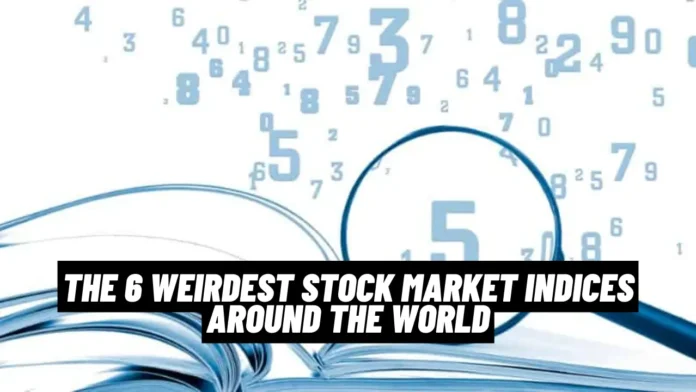Stock market indices typically track the performance of specific segments of the market, like the S&P 500 or the Dow Jones Industrial Average, which follow the largest companies in the U.S. However, not all indices are so straightforward. Some are crafted to capture niche markets or peculiar economic indicators. Here are six of the strangest and most unique indices from around the globe:
1. The Skyscraper Index
Description:
The Skyscraper Index, introduced by economist Andrew Lawrence in 1999, is an intriguing economic indicator. It correlates the construction of the world’s tallest buildings with impending financial crises. The theory suggests that the construction of record-breaking skyscrapers often precedes economic downturns.
Strange Factor:
While not a conventional stock market index, this index’s focus on architectural ambition as a harbinger of economic trouble makes it unusual. Examples include the Burj Khalifa’s completion near the 2008 financial crisis and the Petronas Towers around the 1997 Asian financial crisis.
Relevance:
It serves as a psychological and speculative gauge of economic overconfidence, rather than a direct financial metric.
2. The Big Mac Index
Description:
The Big Mac Index, created by The Economist in 1986, measures the purchasing power parity (PPP) between different currencies through the price of a McDonald’s Big Mac. It essentially compares how much a Big Mac costs in various countries to assess if currencies are under or overvalued.
Strange Factor:
Using a fast-food item as a basis for currency valuation is unconventional but effective in providing a digestible (pun intended) snapshot of economic disparities.
Relevance:
It highlights global economic imbalances and provides insights into local cost-of-living differences and currency exchange rates in a quirky, relatable manner.
3. The Lipstick Index
Description:
Coined by Leonard Lauder, chairman of Estée Lauder, the Lipstick Index suggests that lipstick sales tend to increase during economic downturns. The logic is that consumers treat themselves to smaller, affordable luxuries when they can’t afford more significant expenditures.
Strange Factor:
Linking economic health to cosmetics sales is unusual, but it underscores consumer behavior during financial stress.
Relevance:
It offers a unique perspective on consumer confidence and spending patterns during recessions.
4. The Hemline Index
Description:
The Hemline Index posits that women’s skirt lengths are indicative of economic trends. Higher hemlines (shorter skirts) are associated with booming economies, while longer hemlines correlate with economic downturns. This concept was introduced by economist George Taylor in 1926.
Strange Factor:
Using fashion trends as a barometer for economic cycles is certainly unconventional but reflects the broader societal mood.
Relevance:
While not scientifically rigorous, it provides a cultural lens on economic sentiment and consumer confidence.
5. The Billboard Hot 100
Description:
The Billboard Hot 100 is a chart that ranks the top 100 songs in the U.S. based on sales, radio play, and online streaming. While not a financial index, it has been observed that the popularity of certain types of music can correlate with economic sentiment. For instance, the rise of upbeat music might align with economic optimism.
Strange Factor:
Tying music trends to economic indicators is a creative and indirect way of gauging societal mood and economic conditions.
Relevance:
It offers insights into consumer behavior and societal trends that might indirectly reflect economic conditions.
6. The Men’s Underwear Index (MUI)
Description:
Proposed by former Federal Reserve Chairman Alan Greenspan, the Men’s Underwear Index suggests that sales of men’s underwear are a good economic indicator. The rationale is that men regard underwear as a necessity, and during economic hardship, they delay replacing them, leading to a drop in sales.
Strange Factor:
Using a staple item of clothing as an economic indicator is unusual but provides a straightforward, practical measure of consumer frugality.
Relevance:
It reflects the impact of economic conditions on discretionary spending and consumer confidence.
Quick Review:
Q1.Why do we need unusual indices like the Lipstick Index?
Ans. Unusual indices offer alternative perspectives on economic conditions, capturingstock market aspects that traditional financial metrics might miss.
Q2.Can these weird indices be relied upon for serious investment decisions?
Ans. While interesting, these indices are more anecdotal and should be used in conjunction with more traditional financial analyses for investment decisions.
Q3.How accurate are indices like the Big Mac Index in reflecting economic realities?
Ans. The Big Mac Index provides a simple snapshot of currency valuation and cost of living but is not a comprehensive economic measure.

